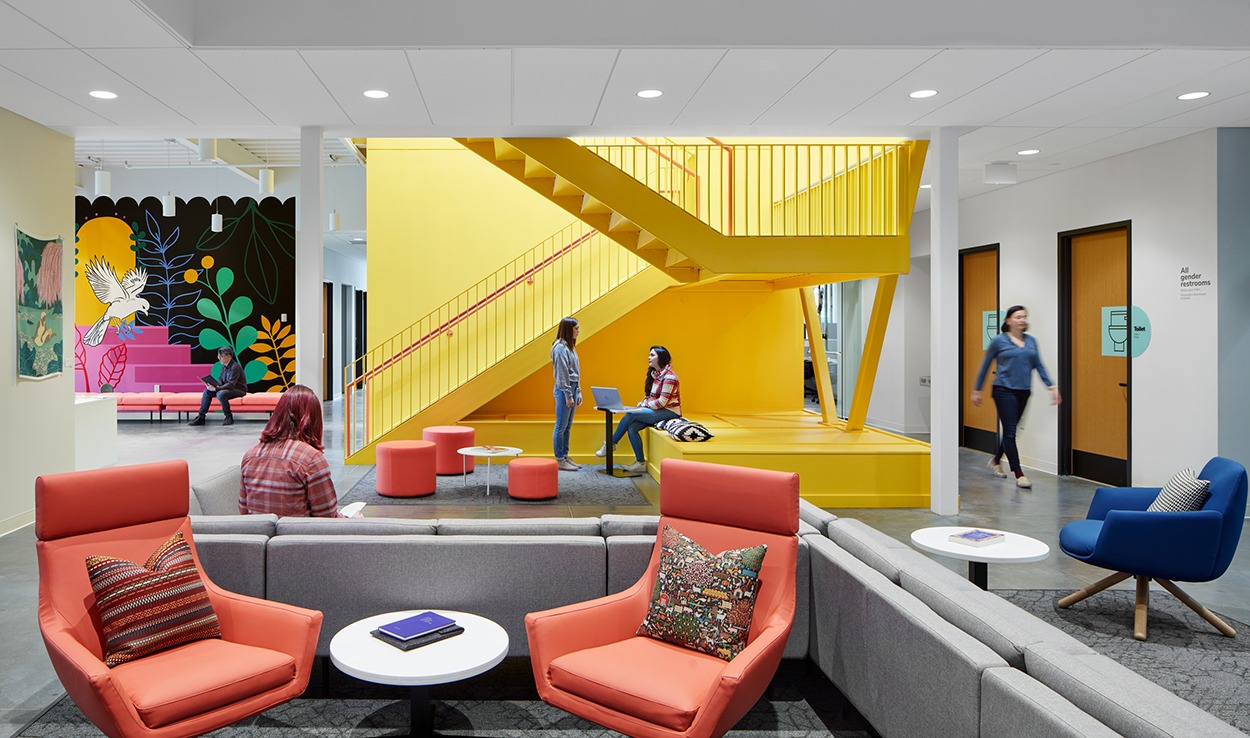Catching up on my reading this week while recovering from the flu, I came across the American Hospital Association's 2018 Environmental Scan.
While the word "environmental" might be misleading for you designers, this is a report on the trends that are shaping healthcare in America, from the association that represents more than 5,000 hospitals, health systems, networks, and other providers of care.
It's broken down into five key areas:
- Coverage and access for all
- High-value care
- Patients, families, and other stakeholders involved as partners
- Well-being and prevention
- Services provided in a coordinated, seamless manner
There's lots to glean from this report that is relevant to healthcare facility design. Here is what stood out for me.
1. Access: Workforce Shortages Loom
The report states: "Without an adequate and appropriately trained supply of health professionals, the hospital field will not be able to meet the needs of an aging population, care for patients in rural and urban communities, address behavioral health needs and provide the services the changing environment will demand."
With more than half of U.S. physicians suffering from burnout, many CEOs feel that this is a public health crisis. Nursing vacancies also continue to rise, as the population ages and older nurses retire.
Many hospitals have already started implementing strategies to increase employee job satisfaction and "joy in work," and many more plan to do so in the next five years.
Relevance to design: Corporate America has long known that the physical design of the workplace environment is critical to not only attract and retain quality employees, but also make them more productive. The healthcare industry is starting to realize this, but can do more to create supportive, healthy environments for staff.
2. Partners: Digital Healthcare Experience Key to Patient Engagement
Again, from the report: "Healthcare providers are fostering true patient engagement and recognizing the diversity in their communities. As the patient grows to expect a digital healthcare experience, health are organizations are responding by embedding technology into care delivery and protecting patient information."
A whopping 78% of consumers say they are interested in getting healthcare virtually some or most of the time.
Are we surprised by this? Probably not, but virtual doctor visits are expected to rise from 16.6 million in 2015 to 26.9 million in 2020.
There's also been a shift to consumerism in healthcare over the past 10 years -- driven by increased patient cost-sharing and outcomes-based payment system.
Relevance to design: If the patient doesn't visit the doctor in person, does the doctor need an office? Yes, but maybe it is smaller and designed to better support telemedicine. And, as patients become more discriminating consumers, they will make choices not only based on the quality of care, but also how the facility in which that care is delivered looks and feels.
3. Well-Being: Going Beyond the Four Walls of the Hospital
Another statement from the report: "Hospitals focus on well-being and partnership with community resources. The healthcare system is evolving outside of the four walls of the hospital and into the community in an effort to manage and prevent chronic disease and improve the well-being of patients and the community."
Managing a chronic disease like Alzheimer's is going to get more complicated as the number of Americans 65 or older with it is expected to almost triple in the next 35 years.
What's more, 25% of seniors on Medicare have one or more chronic condition.
Relevance to design: Are there enough memory care facilities in the U.S. to accommodate eight million more people with Alzheimer's? Maybe not all of them want or need to go into memory care right away. So, designing senior living communities that are supportive of this patient population is critical. And if seniors are the ones using the healthcare system the most, paying attention to how they experience and interact with the physical environment is also critical.
More Futurescan Insights
Here's a few more things from the report that I found relevant to healthcare facility design:
- As patient populations become increasingly diverse, providing culturally competent care is more important than ever.
- 27% of ED visits could be handled at retail clinics and urgent care centers at a cost savings of about $4.4 billion a year.
- Innovation is not limited to technology or bioscience, but extends across all aspects of operations. CEOs have to act and think differently to lead their organizations during this time of industry change.
- 61% of healthcare leaders say patient experience improvement is their top investment area over the next three years.
The complete 2018 Environmental Scan was published in the October issue of Hospitals & Health Networks. There's also a great article on physician burnout in that issue.
Oh, and in case you're wondering, I'm over the flu.
P.S. Please do me a favor -- if you liked this post and like this blog, please share it with others by sending them the link or posting it on your Twitter, LinkedIn, or Facebook. Also, don't forget to subscribe, so you'll get emails when new content is posted. Thanks!







